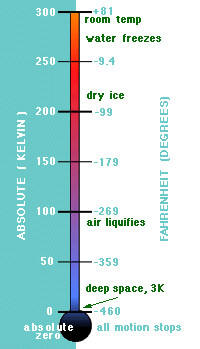How Cold Are Cold Atoms?

|

Eun: How'd it all start? Well, I finally got around to opening The Bulletin and there was a piece about Frank working on cold atom research. I was doing the same thing in my lab at the NRL. I can't tell you how delighted I was to learn that someone at Swat was getting into this pioneer work. It was noteworthy enough that I sent Frank an e-mail congratulating him. An ulterior motive was that I was at the beginning stages of building a team and thought Frank would add a lot to the new project I was launching. Frank: Eun sent me that congratulatory note and invited me to collaborate on a new research project he was running at the NRL. Eun had been interested in astrophysics while at Swarthmore and studied most closely with John Gaustad, now Edward Hicks Magill Professor Emeritus of Astronomy. But I remembered him. Born in Korea, raised in suburban Baltimore. Charming. And, of course, very bright. Double-majored in engineering and physics/astronomy. Eun: After graduating from Swat, I worked at the NASA Goddard Space Flight Center for five years [where he worked directly with the group of John Mather '68 and George Smoot, winners of the 2006 Nobel Prize in Physics]. Afterwards, my professional interests migrated out of astrophysics and into what is considered the cutting edge of atomic physics: cold atom research. For the last five years, I've been working at the NRL while simultaneously working towards my Ph.D. Frank: Our research is in the relatively new field of physics broadly known as cold atoms, or BECs [Bose-Einstein Condensates]. The Navy has a standing need for evermore accurate and sensitive detectors of gravitational anomalies (used to find submerged or otherwise hidden objects) as well as inertial effects such as rotation. Ultra-cold atoms have the potential of increasing the sensitivity of such detectors by a factor of approximately one million. Whether our research will lead to a practical gravity gradient sensor or a new gyroscope is, of course, uncertain. What is certain is that immense amounts of new and interesting physics will be learned along the way. So how does it all work? How do we cool gases, atomic vapors, actually, to nearly absolute zero, using laser light no less? The questions I most often get are: "Isn't light a form of energy?" "Shouldn't shining laser light on atoms heat them, instead?" Well, light is certainly a form of energy, but when absorbed by an atom, this energy goes into heating - actually "exciting" is a better word - the atom's innards. What most people don't realize is that the temperature of an atomic sample, such as a gas, has nothing to do with the atom's insides. Instead, temperature - in the common use of the word - is an indication of the average speed of a typical atom in the gas. Eun: The greater the average speed, the higher the temperature. It is this velocity that can be altered through another attribute of light that most people are probably not aware of.
Of course, in any ordinary gas sample, there are on average as many atoms moving to the left as the right, so cooling - or heating for that matter - won't take place. The breakthrough, and the Nobel Prize in 1997, came with the realization that atoms could be tricked into absorbing photons in head on collisions, and therefore slowing down, if you adjust the color of the laser lights. The result is that temperatures as low as 20 millionths of a degree centigrade above absolute zero are routinely achieved. But to produce a BEC, the atoms need to be cooled even further. Yes, it can be done. And yes, it was a breakthrough that merited another Nobel Prize in 2001. The gas must also be compressed so that atoms are closer together. The internal degrees of excitations that atoms have are best described in quantum mechanical terms as waves. Each atom has the same frequency of wave as does any other. However, these waves are not "in sync." Think of a clock shop with many pendulum clocks, each swinging with totally random synchronization. The technical term is "phase." For ultra-cold atoms compressed very near each other, these phases become synchronized. The result is a system that is macroscopic, yet behaves according to quantum mechanics. Such a delicate state of matter is highly susceptible to external disturbances, hence its potential use in sensors and detectors.
Eun: Our work is challenging. Because it is a fairly new field, we cannot just go to WalMart and buy the equipment needed to conduct our research. We rely on many disciplines, including mechanical engineering, electrical engineering, physics, vacuum science, and design in order to develop virtually everything we need. Above, the title graphic depicts the cooling down of a cloud of atoms from 400 to 50 nano-Kelvins. |
||||||||||||||||||||||






